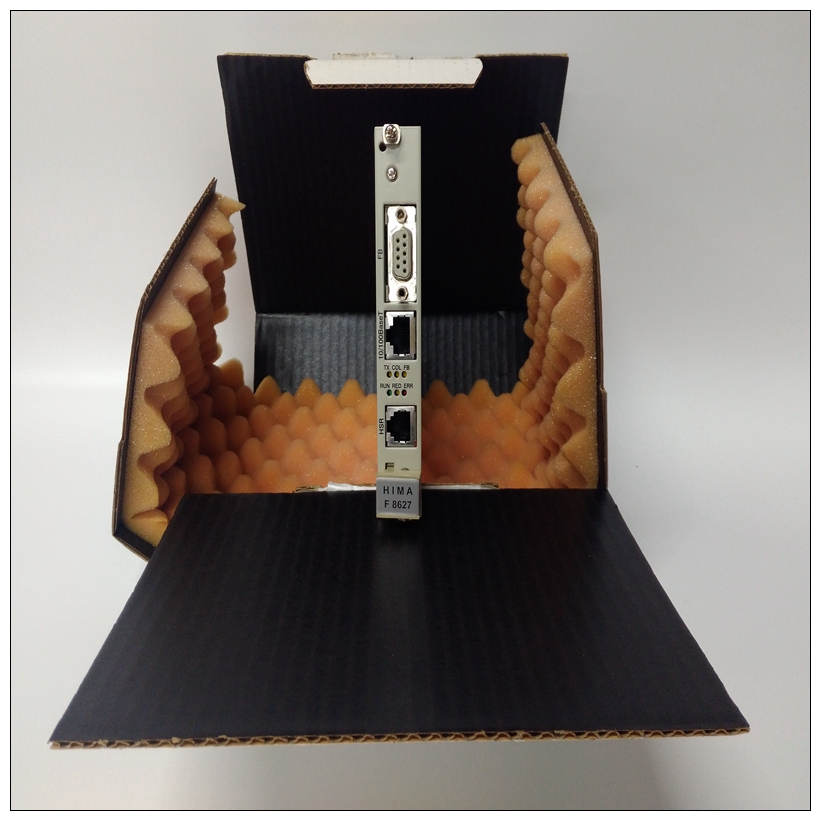HIEE450880R1脈沖輸入卡件,工業卡件
例如,如果在故障報告啟用菜單中將低報警啟用設置為禁用,則當通道上檢測到低報警時,低報警故障不會記錄在I/O故障表中。故障報告啟用如果啟用了故障報告,下面列出的其他參數可用于啟用特定類型的故障。禁用中斷啟用禁用低報警啟用禁用高報警啟用禁用低范圍啟用禁用超范圍啟用禁用斷線啟用(僅限電流模式)禁用下鉗位報警啟用禁用上鉗位報警禁用短路啟用(僅限于電壓模式)禁用PACSystems*RX3i系統手冊第12節GFK-2314T 2019年9月模擬輸出模塊48310.4.5.3.1報警和故障報告-診斷報告啟用、故障報告啟用和中斷啟用配置參數可用于為單個通道報警啟用不同類型的響應。默認情況下,在每個通道上禁用所有響應。可以為每個通道配置報警啟用的任何組合。? 如果啟用了診斷報告,模塊將在為該通道配置的診斷參考地址的參考存儲器中報告通道報警。? 如果啟用了故障報告,則模塊會在I/O故障表中記錄每次通道報警的故障日志。? 如果啟用了中斷,警報可以觸發應用程序中中斷塊的執行,如下所述。10.4.5.3.2使用中斷為了正確配置I/O中斷,必須在該模塊的配置文件中設置中斷啟用位。此外,應響應信道中斷而執行的程序塊必須映射到對應于該信道的參考地址。示例:在此示例中,輸出參考地址塊映射到%AQ0001-%AQ0008。如果通道2出現高報警條件,應觸發I/O中斷塊。? 配置高報警條件。? 在模塊配置中設置通道2的高報警中斷啟用標志。通道2的參考地址對應于%AQ00003(每個通道2個字),因此應為“I/O中斷”類型設置中斷程序塊調度屬性,并將“%AQ0003”設置為觸發器。故障報告和中斷這些模塊具有診斷報告和中斷的單獨啟用/禁用選項。通常,禁用配置中的診斷(如低/高報警或過高/過低范圍)意味著其診斷位從未設置。但是,如果為某個條件啟用了中斷并且發生了該中斷,則在I/O中斷塊邏輯執行期間也會設置該條件的診斷位。下一次PLC輸入掃描總是將此中斷狀態位清除回0,因為診斷報告已禁用。10.4.6模塊數據:IC695ALG008模塊從其配置的輸出字接收其信道數據,從其分配的信道值參考地址開始。每個信道占用兩個字(無論是否使用信道):PACSystems*RX3i系統手冊第12節GFK-2314T 2019年9月模擬輸出模塊484信道值參考地址包含此輸入+0、1信道1+2、3信道2+4、5信道3+6、7信道4+8、9信道5+10、11信道6+12、13信道7+14、15信道8取決于其配置的信道值格式,每個啟用的通道輸出參考位置被讀取為32位浮點或16位整數值。在16位整數模式中,32位通道數據區的低位字包含16位整數通道值。32位中的高位字(高位16位)被忽略。全系列的
For example, if Low Alarm Enable is set to Disabled in the Fault Reporting Enable menu, the Low Alarm fault is not logged in the I/O Fault Table when Low Alarm is detected on the channel. Fault Reporting Enable If Fault Reporting is enabled, the additional parameters listed below can be used to enable specific types of Faults. Disabled Interrupts Enable Disabled Low Alarm Enable Disabled High Alarm Enable Disabled Under Range Enable Disabled Over Range Enable Disabled Open Wire Enable (current mode only) Disabled Lower Clamp Alarm Enable Disabled Upper Clamp Alarm Enable Disabled Short Circuit Enable (voltage mode only) Disabled PACSystems* RX3i System Manual Section 12 GFK-2314T Sept. 2019 Analog Output Modules 483 10.4.5.3.1 Alarming and Fault Reporting The Diagnostic Reporting Enable, Fault Reporting Enable, and Interrupt Enable configuration parameters can be used to enable different types of responses for individual channel alarms. By default, all responses are disabled on every channel. Any combination of alarm enables can be configured for each channel. ? If Diagnostic Reporting is enabled, the module reports channel alarms in reference memory at the Diagnostic Reference address configured for that channel. ? If Fault Reporting is enabled, the module logs a fault log in the I/O Fault table for each occurrence of a channel alarm. ? If Interrupts are enabled, an alarm can trigger execution of an Interrupt Block in the application program, as explained below. 10.4.5.3.2 Using Interrupts To properly configure an I/O Interrupt, the Interrupt enable bit or bits must be set in the configuration profile of this module. In addition, the program block that should be executed in response to the channel interrupt must be mapped to the reference address corresponding to that channel. Example: In this example, the Output Reference Address block is mapped to %AQ0001-%AQ0008. An I/O Interrupt block should be triggered if a High Alarm condition occurs on Channel 2. ? Configure the High-Alarm condition. ? Set the High-Alarm Interrupt Enable flag for Channel 2 in the module configuration. The reference address of Channel 2 corresponds to %AQ00003 (2 Words per channel), so the interrupt program block Scheduling properties should be set for the "I/O Interrupt" Type and "%AQ0003" as the Trigger. Fault Reporting and Interrupts These modules have separate enable/disable options for Diagnostic Reporting and Interrupts. Normally, disabling a diagnostic (such as Low/High Alarm or Over/Under range) in the configuration means that its diagnostic bit is never set. However, if interrupts are enabled for a condition and that interrupt occurs, the diagnostic bit for that condition is also set during the I/O Interrupt block logic execution. The next PLC input scan always clears this interrupt status bit back to 0, because Diagnostic Reporting has it disabled. 10.4.6 Module Data: IC695ALG808 The module receives its channel data from its configured output words, beginning at its assigned Channel Value Reference Address. Each channel occupies two words (whether the channel is used or not): PACSystems* RX3i System Manual Section 12 GFK-2314T Sept. 2019 Analog Output Modules 484 Channel Value Reference Address Contains this Input +0, 1 Channel 1 +2, 3 Channel 2 +4, 5 Channel 3 +6, 7 Channel 4 +8, 9 Channel 5 +10, 11 Channel 6 +12, 13 Channel 7 +14, 15 Channel 8 Depending on its configured Channel Value Format, each enabled channel output reference location is read as a 32-bit floating-point or 16-bit integer value. In the 16-bit integer mode, low word of the 32-bit channel data area contains the 16-bit integer channel value. The high word (upper 16-bits) of the 32-bits is ignored. The full range of













